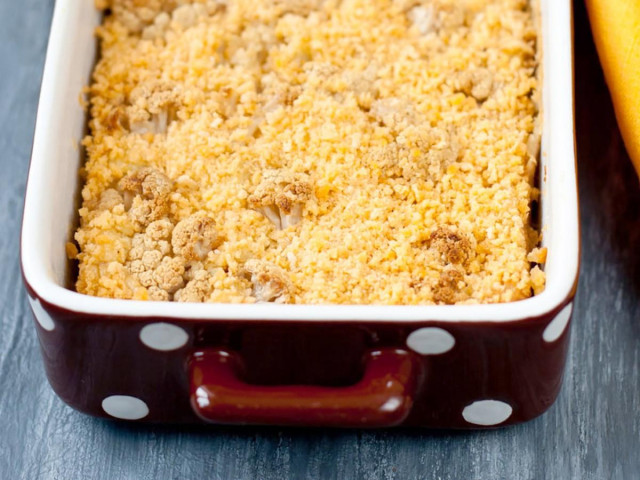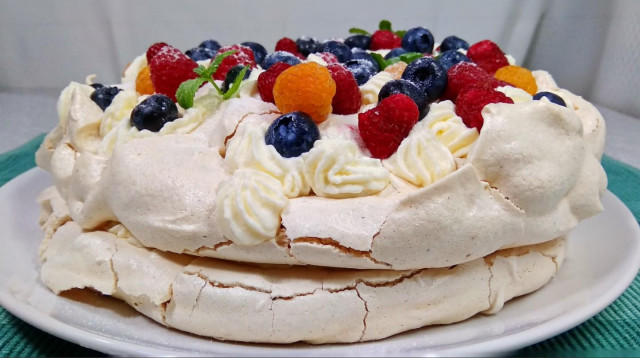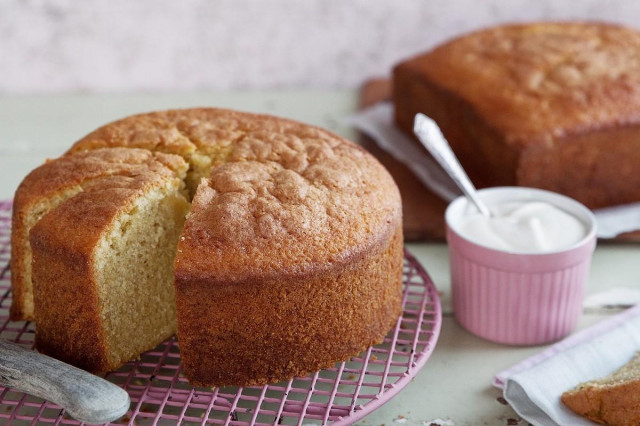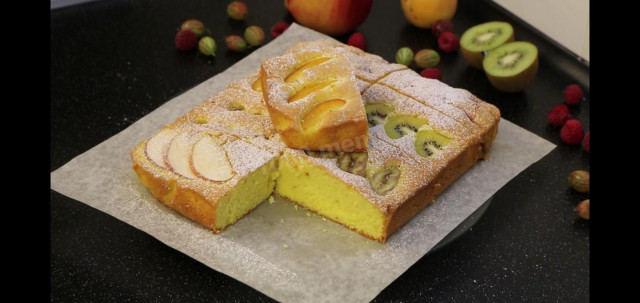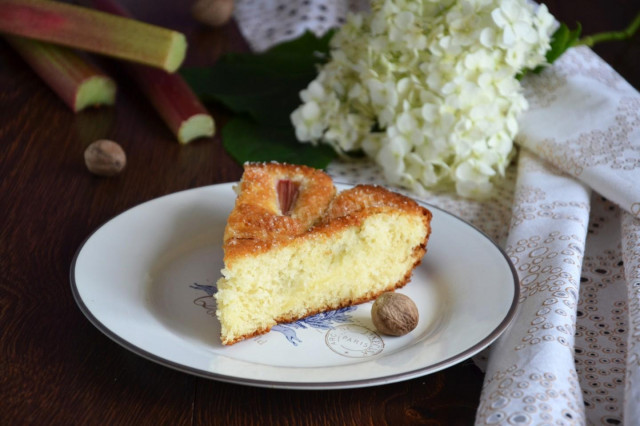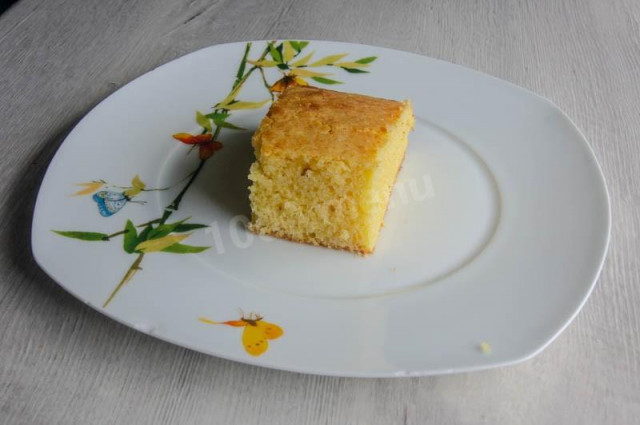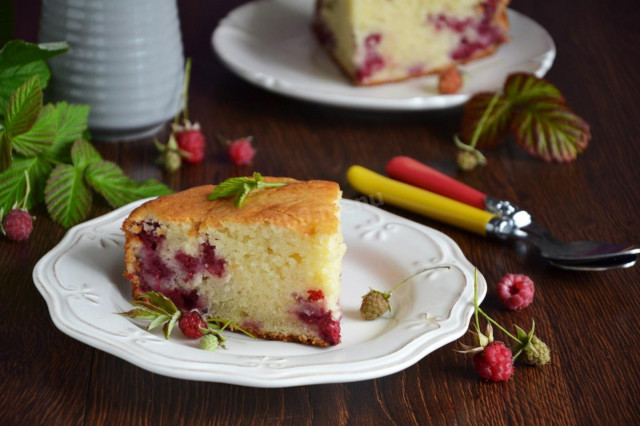Composition / ingredients
Cooking method
Usually such pies are baked sweet, and they owe the name "Three glasses" to the fact that the three main ingredients - flour, sugar and semolina are taken in the same volume, namely, by the glass. This pie got its name by analogy, only it needs the other three glasses, because this pastry is unsweetened. For the cake, you will need a glass of flour, a glass of breadcrumbs and a glass of butter, diced.
We will blanch the cauliflower for the pie so that it turns out to be especially tender in baking. To do this, we sort out the cabbage, wash it, cut off the darkened areas, if available, disassemble it into inflorescences. In a saucepan, boil salted water and when it boils, we throw cabbage there. Cook the cabbage for literally 1-2 minutes and throw it into a colander. Let all the excess water drain.
If desired, cabbage can be fried in butter or olive oil instead of blanching, but this will make the dish more caloric.
While the water is draining, we prepare the dough. To do this, pour breadcrumbs, flour and butter into a bowl of a suitable size. We rub everything into crumbs with a tablespoon. And you can also use your hands - so it will go faster.
Take the baking dish. It is not necessary to lubricate it with oil additionally. Pour half of the crumbs on the bottom. We evenly distribute the cauliflower on top. Sprinkle with a small amount of salt, freshly ground black pepper (you can use a shop mill), Provencal dried herbs. Grate cheese on top on a coarse grater. Next, pour out the remaining crumbs.
We put the form with the future pie in preheated to 200 degrees for half an hour. During this time, the cabbage will be well baked and tender, and the pie will be covered with an appetizing crust on top.
The finished pie is served hot on the table, spread out on serving plates. You can decorate it with fresh herbs. The pie will go well with various sauces. especially on the basis of cream.
Bon appetit!
Calorie content of the products possible in the composition of the dish
- Dutch cheese - 352 kcal/100g
- Swiss cheese - 335 kcal/100g
- Cheese "Russian" - 366 kcal/100g
- Kostroma cheese - 345 kcal/100g
- Yaroslavsky cheese - 361 kcal/100g
- Altai cheese 50% fat content - 356 kcal/100g
- Soviet cheese - 400 kcal/100g
- Cheese "steppe" - 362 kcal/100g
- Uglichsky cheese - 347 kcal/100g
- Poshekhonsky cheese - 350 kcal/100g
- Lambert cheese - 377 kcal/100g
- Appnzeller cheese with 50% fat content - 400 kcal/100g
- Chester cheese with 50% fat content - 363 kcal/100g
- Edamer cheese with 40% fat content - 340 kcal/100g
- Cheese with mushrooms of 50 % fat content - 395 kcal/100g
- Emmental cheese with 45% fat content - 420 kcal/100g
- Gouda cheese with 45% fat content - 356 kcal/100g
- Aiadeus cheese - 364 kcal/100g
- Dom blanc cheese (semi-hard) - 360 kcal/100g
- Lo spalmino cheese - 61 kcal/100g
- Cheese "etorki" (sheep, hard) - 401 kcal/100g
- White cheese - 100 kcal/100g
- Fat yellow cheese - 260 kcal/100g
- Altai cheese - 355 kcal/100g
- Kaunas cheese - 355 kcal/100g
- Latvian cheese - 316 kcal/100g
- Limburger cheese - 327 kcal/100g
- Lithuanian cheese - 250 kcal/100g
- Lake cheese - 350 kcal/100g
- Gruyere cheese - 396 kcal/100g
- Cauliflower - 28 kcal/100g
- Ground black pepper - 255 kcal/100g
- Whole durum wheat flour fortified - 333 kcal/100g
- Whole durum wheat flour universal - 364 kcal/100g
- Flour krupchatka - 348 kcal/100g
- Flour - 325 kcal/100g
- Butter 82% - 734 kcal/100g
- Amateur unsalted butter - 709 kcal/100g
- Unsalted peasant butter - 661 kcal/100g
- Peasant salted butter - 652 kcal/100g
- Melted butter - 869 kcal/100g
- Salt - 0 kcal/100g
- Olive oil - 913 kcal/100g
- Breadcrumbs - 347 kcal/100g
- Herb mixture - 259 kcal/100g

